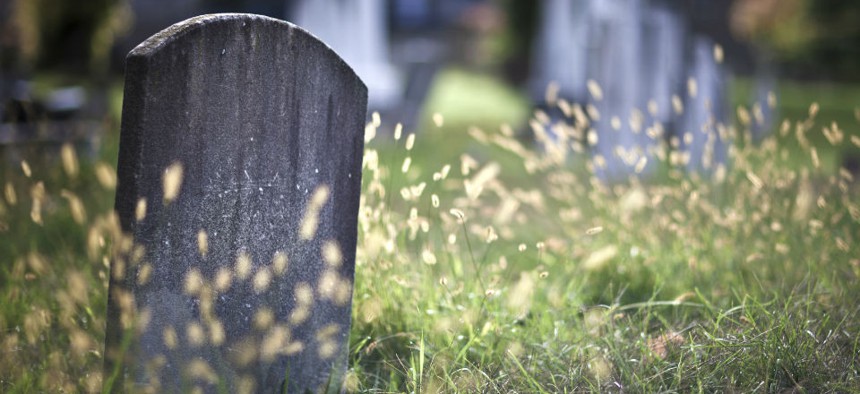
Stuart Monk / Shutterstock.com
How Many 112-Year-Olds Are Still Living, According to SSA?
6.5 million, based on flawed information from the master death file.
Estimates are that only 35 people worldwide are still living at age 112. But you wouldn’t know it from the Social Security Administration’s publicly sold death master file, which still lists as living about 6.5 million number holders born before June 16, 1901, according to a new inspector general audit.
More than 4,000 of those putative superannuated Americans were even the subject of inquiries under the Homeland Security Department’s E-Verify program to detect undocumented immigrants, added the report by SSA watchdog Patrick O’Carroll, which prompted two senators to warn that the flawed list could be exploited by fraudsters.
The agency responded that updating the electronic database on which the master file is based to reflect all death dates would require expensive manual labor that officials consider a low priority.
To create the death master file, which the Commerce Department offers for sale primarily to financial industry businesses, SSA matches death reports from various sources against its Social Security benefit payments records using an electronic file called the Numident, which contains individualized information.
The IG auditors, in reviewing SSA’s protections against identity fraud, heard from one financial institution that a man opened accounts using Social Security numbers of people born as early as 1886 and 1893. The IG’s review of procedures during tax years 2008 through 2012 found that SSA had inputted dates of death on approximately 1.4 million non-beneficiaries’ payment records but had not recorded the death information on the Numident.
The IG found only 71 instances in which the likely-deceased number holders reported earnings of more than $1,000 in tax years 2008 through 2012. “In no case did it appear someone who was actually born before June 16, 1901, was working,” the report said.
In 34 cases, it appeared someone was misusing a deceased number holder’s name and SSN to work. In the other 37 cases, discrepancies in SSA records indicated the wage earners were not actually born before June 16, 1901.
The IG concluded that “SSA did not establish controls to annotate death information onto the Numident record of number holders who exceeded maximum reasonable life expectancies and were likely deceased.”
Sen. Ron Johnson, R-Wis., chairman of the Homeland Security and Governmental Affairs Committee, stated: “It is incredible that the Social Security Administration in 2015 does not have the technical sophistication to ensure that people they know to be deceased are actually noted as dead. This problem has serious consequences. Tens of thousands of these numbers are currently being used to report wages to the Social Security Administration and to the [Internal Revenue Service]. People are fraudulently, but successfully, applying for jobs and benefits with these numbers. Making sure Social Security cleans up its death master file to prevent future errors and fraud is a good government reform we can all agree on.”
Ranking member Sen. Tom Carper, D-Del., added, “Not only do these types of avoidable errors waste millions of taxpayers’ dollars annually and expose our citizens to identify theft, but they also undermine confidence in our government.” He said he would contact the head of SSA “asking for specific answers as to how and when they will take the findings in this report to heart, and urge the agency to work with Congress to put an end to this unacceptable situation.”
The IG recommended that the agency review the situation and produce a corrective plan by the end of fiscal 2015.
SSA agreed to explore the legal and technical issues for updating the file, but disagreed with the recommendation that it add the missing death dates to the current master file, citing the budgetary impact and labor-intensive process required. Such steps “could result in inaccurate death information on the Numident and death master file,” SSA wrote. “Taking addition action to verify the accuracy of death information on death claims would detract from mission-critical work such as redesigning our death processing system.”
(Image via Stuart Monk / Shutterstock.com)







